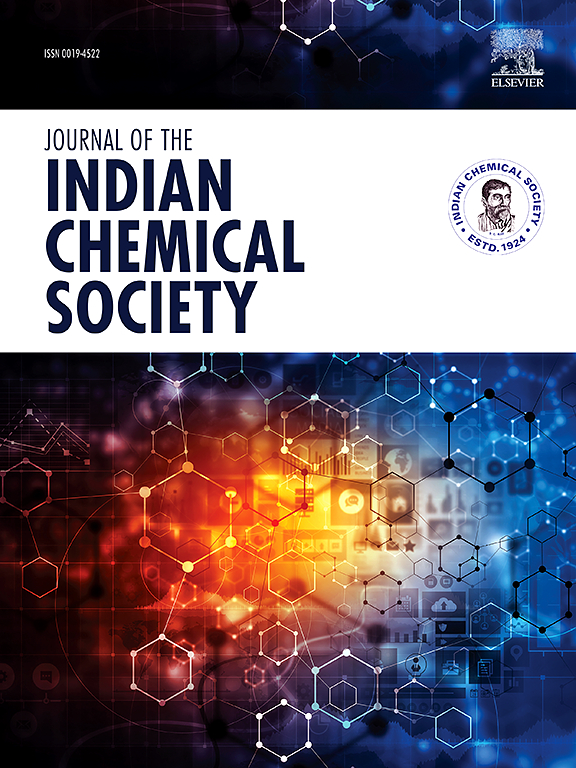质子酸和电解质浓度对聚苯胺基超级电容器电化学性能的调节
IF 3.2
4区 化学
Q2 CHEMISTRY, MULTIDISCIPLINARY
引用次数: 0
摘要
本研究考察了质子酸(HCl, H2SO4)的包合以及优化的KOH和NaOH电解质浓度对提高聚苯胺作为超级电容器电极效率的作用。通过电化学测试发现,掺杂HCl和H2SO4的聚苯胺在不同电解质浓度下的性能差异明显。在相同条件下,掺杂1 M HCl (PH1)的聚苯胺在1 M KOH电解液中的比电容为167.75 Fg-1,优于掺杂1 M H2SO4的聚苯胺(PS)的比电容为155.75 Fg-1。此外,PH1和6m KOH浓度下,在1 Ag-1(电流密度)下,比电容显著提高256 Fg-1量级。x射线衍射(XRD)分析证实了聚苯胺的半晶性质,掺杂后,聚苯胺向更高的角度移动,表明电荷存储能力增强,稳定性提高。FESEM分析进一步支持了电化学性能的增强,掺杂2 M HCl (PH2)的聚苯胺纳米粒子呈现团聚现象,而掺杂1 M H2SO4和HCl的聚苯胺纳米粒子呈现排列良好的纳米纤维形态。目前的研究结果突出表明,优化对于选择合适浓度的掺杂剂和电解质来开发高性能聚苯胺基电极对于推进高性能超级电容器的发展是多么重要。本文章由计算机程序翻译,如有差异,请以英文原文为准。
Tuning electrochemical performance of polyaniline-based supercapacitors by inclusion of protonic acid and electrolyte concentration
This study investigates the role of inclusion of protonic acid (HCl, H2SO4) and optimized electrolyte concentration of KOH and NaOH to enhance the efficiency of the PANI as a supercapacitor electrode. Electrochemical testing of PANI doped with HCl and H2SO4 reveals a clear performance distinction in different electrolyte concentrations. PANI doped with 1 M HCl (PH1) exhibits an outperforming specific capacitance of 167.75 Fg-1 in 1 M KOH electrolyte than 1 M H2SO4 doped PANI (PS) with specific capacitance of 155.75 Fg-1 under same condition. Furthermore, the significant enhancement in specific capacitance of the order of 256 Fg-1 at 1 Ag-1 (current density) is shown by PH1 with 6 M concentration of KOH. X-ray diffraction (XRD) analysis confirms semi-crystalline nature of PANI, with a shift toward a higher angle upon doping indicating the enhanced charge storage capacity and improved stability. The enhancement in electrochemical properties is further supported by FESEM analysis where polyaniline nanoparticles doped with 2 M HCl (PH2) shows agglomeration, while doping with 1 M H2SO4 and HCl exhibits a well-aligned nanofiber morphology. The current findings of present work highlight that, how important the role of optimization is for selecting suitable concentration of dopants as well as electrolytes to develop high-performance PANI-based electrodes for advancing high-performance supercapacitors.
求助全文
通过发布文献求助,成功后即可免费获取论文全文。
去求助
来源期刊
CiteScore
3.50
自引率
7.70%
发文量
492
审稿时长
3-8 weeks
期刊介绍:
The Journal of the Indian Chemical Society publishes original, fundamental, theorical, experimental research work of highest quality in all areas of chemistry, biochemistry, medicinal chemistry, electrochemistry, agrochemistry, chemical engineering and technology, food chemistry, environmental chemistry, etc.

 求助内容:
求助内容: 应助结果提醒方式:
应助结果提醒方式:


